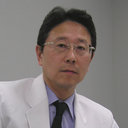Antimutagenic activity of phenylpropanoids from clove (Syzygium aromaticum).
キーワード
概要
Phenylpropanoids that possess antimutagenic activity were isolated from the buds of clove (Syzygium aromaticum). The isolated compounds suppressed the expression of the umu gene following the induction of SOS response in the Salmonella typhimurium TA1535/pSK1002 that have been treated with various mutagens. The suppressive compounds were mainly localized in the ethyl acetate extract fraction of the processed clove. This ethyl acetate fraction was further fractionated by silica gel column chromatography, which resulted in the purification and subsequent identification of the suppressive compounds. Electron impact mass spectrometry, IR, and (1)H and (13)C NMR spectroscopy were then used to delineate the structures of the compounds that confer the observed antimutagenic activity. The secondary suppressive compounds were identified as dehydrodieugenol (1) and trans-coniferyl aldehyde (2). When using 2-(2-furyl)-3-(5-nitro-2-furyl)acrylamide (furylfuramide) as the mutagen, compound 1 suppressed 58% of the umu gene expression as compared to the controls at a concentration of 0.60 micromol/mL, with an ID(50) (50% inhibitory dose) value of 0.48 micromol/mL, and compound 2 suppressed 63% of the umu gene expression as compared to the controls at a concentration of 1.20 micromol/mL, with an ID(50) value of 0.76 micromol/mL. Additionally, compounds 1 and 2 were tested for their ability to suppress the mutagenic activity of other well-known mutagens such as 4-nitroquinolin 1-oxide (4NQO) and N-methyl-N'-nitro-N-nitrosoguanidine (MNNG), which do not require liver metabolizing enzymes, and aflatoxin B(1) (AfB(1)) and 3-amino-1,4-dimethyl-5H-pyrido[4,3-b]indole (Trp-P-1), which require liver metabolizing enzymes and activated Trp-P-1 and UV irradiation. Compounds 1 and 2 showed dramatic reductions in their mutagenic potential of all of the aforementioned chemicals or treatment. For the search of the structure-activity relationship, the derivatives of 1 and 2 (1a and 2a-c) were also assayed with all mutagens. Finally, the antimutagenic activities of compounds 1, 1a, 2, and 2a-c against furylfuramide, Trp-P-1, and activated Trp-P-1 were assayed by the Ames test using the S. typhimurium TA100 strain.


